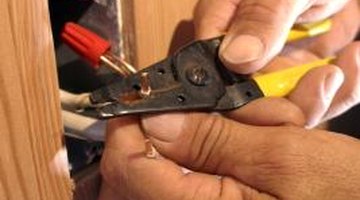Electrical Wire Size for Baseboard Heaters
Electric baseboard heaters provide a quick and easy way to send extra heat to a room without the need to increase heat to the rest of the home. These baseboard heaters are available in both 120- and 240-volt models, and their wiring depends upon the size of the heater itself. Using the required wiring size for installation guarantees the heater's safe operation.
Wire Sizes

The greater the wire size, the more electrical current it can carry. What makes it confusing to many people is that American Wire Gauge (AWG) numbers seem to go backwards. A 12-gauge wire is typical in many homes, and it is larger than a 14-gauge wire and smaller than a 10-gauge wire. Generally, 10- to 12-gauge wire is what you see in most homes and is what would be used for baseboard heaters.
Standard Installation
The maximum size for an electrical baseboard heater is determined by the amount of electricity available on the circuit. Each heater draws a large amount of power, so it must be given its own dedicated circuit. Baseboard heaters that can run for more than three hours non-stop are limited to a 16-amp circuit by code. A 12-gauge AWG wire is sufficient for this installation.
Larger Breakers
The Cadet Soft Heat company recommends using 10-gauge AWG if the baseboard heater is installed on a 30-amp breaker and circuit. Most municipalities consider the manufacturer recommendations the final word on the subject for safety and require the home to meet these specifications.
Dangers
A single-pole heater is more dangerous than a double-pole heater since there is no way to ever turn a single-pole completely off. It may not be generating heat, but electricity is still running along the unit. Heaters cannot be installed under an existing electrical wall outlet or in an area prone to combustible vapors, such as garages where gasoline and paint are stored.
Writer Bio
Jack Burton started writing professionally in 1980 with articles in "Word from Jerusalem," "ICEJ Daily News" and Tagalong Garden News. He has managed radio stations, TV studios and newspapers, and was the chief fundraiser for Taltree Arboretum. Burton holds a B.S. in broadcasting from John Brown University. He is a 26-year veteran of the U.S. Navy/Navy Reserves and the Navy Seabees.
Photo Credits
- Thinkstock/Comstock/Getty Images
More Articles



